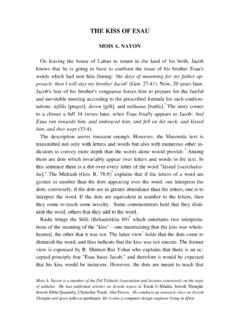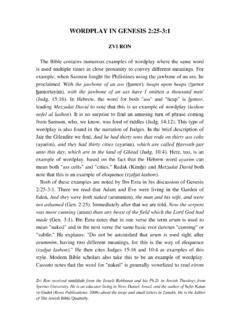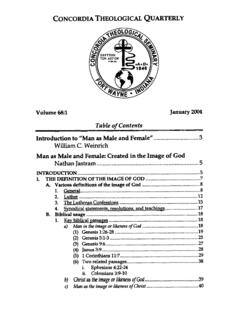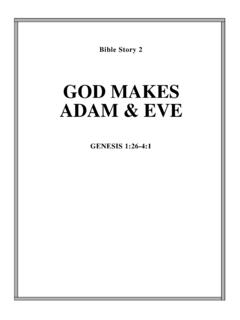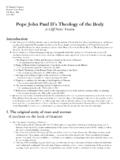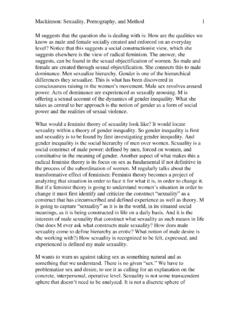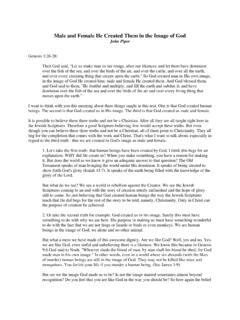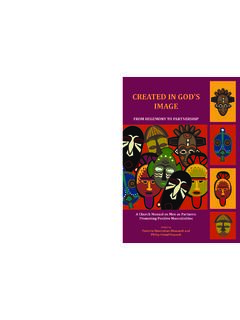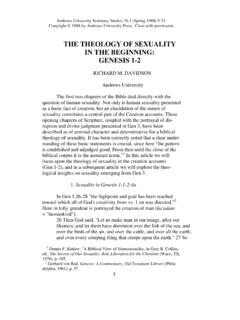Transcription of THE DUALITY OF MAN - Jewish Bible Quarterly
1 Pinchas Kahn attended Yeshiva University, received his in Psychology in 1961, and was a supervisor of psychologists at the NYC Board of Education and a clinical psychologist in private practice. He received his smicha from Rabbi Isaac Elchanan Theological Seminary in 1956 and was the rabbi of Young Israel of Mapleton Park, Brooklyn, New York. He made aliyah in 1993, is retired in Jerusalem and busy learning and teaching. THE DUALITY OF MAN: A STUDY IN TALMUDIC ALLEGORICAL INTERPRETATIONS PINCHAS KAHN An often-neglected area of study is the talmudic readiness to use rather radical allegorical interpretations of biblical texts.
2 An example that adequate-ly illustrates this process is three verses dealing with the DUALITY of man. In its attempt to understand and perceive embedded meanings in these verses, the Talmud (with the Midrash) allegorically interweaves multifaceted considera-tions of man/woman, Divine and mortal, body and soul, as we shall see. These verses are: And God created man in His own image, in the image of God created He him; male and female created He them (Gen. 1:27). Then the Lord God formed man of the dust of the ground, and breathed into his nostrils the breath of life; and man became a living soul (2:7).
3 And the Lord God caused a deep sleep to fall upon the man, and he slept; and He took one of his ribs, and closed up the place with flesh instead thereof. And the rib, which the Lord God had taken from the man, made He a woman, and brought her unto the man (2:21-22). It will be noted that all narrate the actual creation of the First Man, though one is in Chapter 1 of Genesis and the others in Chapter 2. Furthermore, the texts lay problems before us. Each contains ambiguities of its own, and each is in a way inconsistent with the other verses.
4 Does Genesis 1:27 mean to say that a human being was created both male and female ? If so, then, intertex-tually, the verse is in conflict with the other two quoted verses, which do not speak of a joint creation of male and female , but rather of respective separate creative processes for each. Genesis 2:7 implies that man was created only as male, and verses 2:21-22 explicitly state that woman was created from the rib of an already existing man. THE DUALITY OF MAN Vol. 36, No. 2, 2008 103 The Talmud uses these verses from Genesis in a discussion centered upon understanding Psalm 139:5, in itself an example of ambiguous DUALITY .
5 The Psalm begins with a description of an omniscient God who examines and knows man completely. Then, in verse 5, it states: Thou hast hemmed me in behind and before, and laid Thy hand upon me. Ostensibly, this verse has no connection with the creation of man. Nevertheless, with this verse, the Baby-lonian Talmud (Brachot 61a-61b) begins a lengthy discussion on man's duali-ty by referring to the verses in Genesis. R. Jeremiah b. Eleazar said: "God created two countenances in the first man [italics mine], as it says, Behind and before hast Thou formed me [a rephrasing of Ps.]
6 139:5]."1 The reference to the "two countenances in the first man" is an evident allu-sion to Genesis 1:27: .. male and female created He them. The introductory reference to Psalm 139:5 appears to obviate the possibility that Genesis 1:27 be understood as referring to man in general as if in the same category as other animals, male and female (as in Gen. 6:19). If "male and female " in Genesis does not mean two separate beings, what then does it mean? The Talmud perceives the necessity of an allegorical interpretation to un-derstand "male and female " and finds it embedded in the phrase "behind and before" of Psalm 139:5.
7 Thus, the Talmud initially interprets "the first man" as being created with "two countenances." Joseph B. Soloveitchik2 pushes R. Jeremiah's dictum further. He proposes that the verse is not referring to the physiology of man, but conceptually to the "image of God" in man. The phrase male and female is to be unders-tood not physically, but as representing abstract psychological tendencies; namely, passive and active. The "two countenances" describe two poles of human behavior that are found in all mankind, male and female alike.
8 Solo-veitchik's conception is implied in the talmudic allegorization of Genesis and Psalm 139. Soloveitchik delves even further: he understands these traits not only as psychological categories, but also as having religious and philosophical as-pects as well. In a later work, on the basis of Jewish mysticism, he develops this dual aspect of being into transcendental proportions: The principles of creativity and receptivity, acting and being acted upon, energizing and absorbing, aggressiveness and toleration, in-itiating and completing, of limitless emanation of a transcendental PINCHAS KAHN Jewish Bible Quarterly 104being and measured reflection of the cosmos.
9 Are portrayed by the dual motif of masculinity and femininity within our religious expe-rience.. Unconditioned, creative, infinite transcendence and self-conditioned, receptive finite immanence of God are symbolized by masculinity and God's creation of male and female is thereby understood allegorically, and the "two countenances" explain man as dualistically passive and active, re-ceptive and creative, reflecting his experience of God as transcendent and immanent.
10 The Talmud then proceeds with a different allegorical approach, regarding Genesis 2:21-22, the apparent creation of woman: And the rib which the Lord God had taken from man made he a woman. Rav and Samuel explained this differently. One said that [the rib] was a face, the other that it was a tail. No objection can be raised against the one who says it was a face, since so it is written, Behind and before hast Thou formed me. But how does he who says it was a tail explain Behind and before hast Thou formed me?





